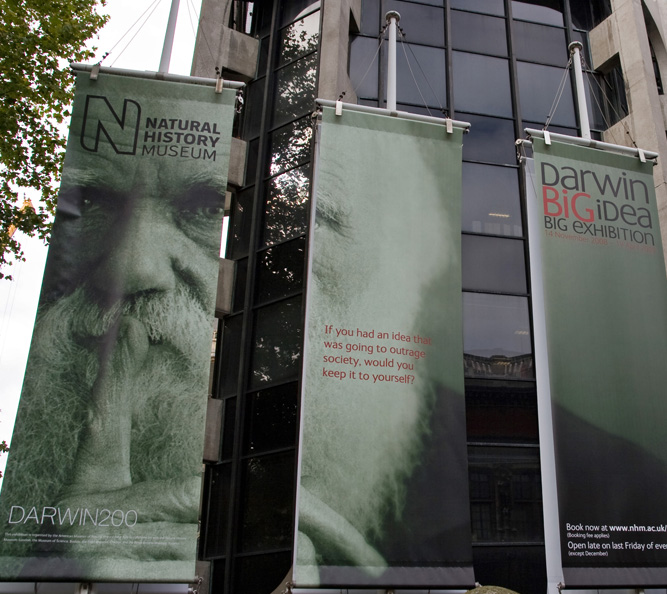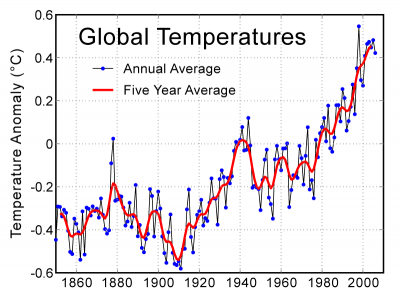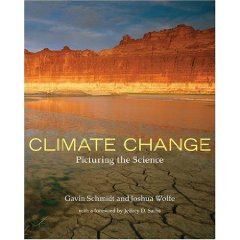24 May 2009
Guarding The Candle
Posted by Dan Satterfield
There has been a lot of talk about a war on Science. Especially here in America.
Is there a war?? If so why is this happening? What are the causes? Is war the right word for it?
There is certainly something going on. I can tell it from the comments and emails I get when I cover anything about climate change, and even when I mention other sciences like Biology. Google was recently inundated with complaints when they used the newly discovered (probably very significant) fossil, named IDA, in the artwork of their banner for a day! Complaints for recognizing a scientific discovery?
When a society attacks the pursuit of knowledge, something is very wrong.
It’s a step back toward the dark from which we came.
Galileo spent the last days of his life as a prisoner of the church for discovering the truth of the solar system. My high school science teacher was fired for teaching evolution. The school system will say it’s not so, but everyone knew the truth. Maybe we have not come as far as we think. Scientist who are used to the slow deliberate pace of the peer review process are unaccustomed to the shrill environment of the news cycle.
Quick quips, and sound bytes, don’t cut the mustard in real science. The public is confused about what to think, but I am not sure it’s justifiable. Citizens in a democracy have a responsibility to educate themselves. Not just about politics, but about science as well.
I know many meteorologists who work in TV, who will not touch anything to do with climate change. They know that if they do, they will get emails from hordes of people who spend much of their free time on pseudoscience web sites being told things that make sense to them. Climate Scientist David Archer had it right when he said “The target audience of denialism is the lay audience. It’s made to look like Science, but it’s PR”.
One person is fighting back. Not sure who he is, but his YouTube videos get the Science spot on. They are well worth a view.
When I get snide comments or complaints, I do not get mad. I actually feel sadness. I cannot give a missing science education in a reply to an email. The best I can do is to suggest some very good books on the subject, written by those who known experts in the field.

The Natural History Museum in London tackled the controversy of Darwin's Theory in an exhibit last fall.
This is the main reason I write this journal. Anyone who works in any science field should take great pains to make sure that the wider public doesn’t just get told “This is what we know”. They should explain WHY we think, what we think. I could give the weather forecast in 30 seconds each day, and that would likely make the producers very happy, but I need the other 90 seconds to show WHY the weather will probably do what I’m forecasting.
Science never comes to a conclusion based on a single piece of information. The truly great thing about science is the discovery of how all the pieces fit together! This doesn’t happen that often. Thomas Huxley, the great 19th century British naturalist, said it best when he remarked on ‘the many beautiful theories that were ruined by a single observation!’
When it does come together, it’s a beautiful thing. Let me use Climate Science as a single example. Similar example from Biology, Geology, or any other Science would do as well.
When scientists at the Hadley Center first averaged the temperature records for the whole globe, they came up with a significant warming over the last 150 years. Science did not just accept that. The folks at NASA Goddard Institute of Space Science in New York did their own calculations. They got nearly the same result. Independently.

NASA GISS Surface temperature records. They use a slightly different method. The results are nearly identical.
However, that’s still not enough.
Difficult measurements using satellites were developed to measure the temperature of the troposphere. Did it agree? At first, it seemed not… but after much work, yes, they agreed. Measurements of the ocean temperature should also agree if the temperature record is accurate. They do.
Is this enough? No. The famous saying “Extraordinary Claims Require Extraordinary Proof ” applies here.
Ingenious ways of measuring the rate of change of temperatures down deep holes, bored in the earth, were developed. These borehole temperatures match well with the NASA GISS and Hadley Center (UK) results. Methods were devised to measure temperature with tree rings and corals in the oceans. The result? A close match. Nearly every tropical glacier on the planet is melting. Now you see how the puzzle comes together.
Perhaps you now understand why there is little I can say to someone who says the the planet is not warming. They send me a graph from some pseudoscience web site that has never been in peer review as their proof. Even if the observations are correct, it’s far more likely that there is an alternate explanation to them than the overturning of all that I mentioned above.
Yet, until recently, this was a common theme of many emails to climate scientists. Only after the information I just wrote about above seeped into the public consciousness has the pendulum finally swung back toward reason.
This is why science must explain the WHY as well. Don’t get me wrong. I’m not complaining that this is not happening. It is, and there are some fabulous books out there. NASA and NOAA have produced dozens of online publications explaining climate change. One that I am reading now is by NASA Scientist Gavin Schmidt and Photographer Joshua Wolfe. Click the image to order it. It’s a fabulous collection of gorgeous pictures and essays on climate science.
More can be done though, and it is something that any researcher, or science journalist should best not forget. Take the time to make sure the “WHY WE KNOW” is given in any interview or publication.
Wonder itself is the bubbling spring of science. The pursuit of knowledge, is that tiny candle in the dark night of ignorance. If you have read my last post, and watched the video of Carl Sagan’s Pale Blue Dot, then you know that he understood this implicitly.
Carl Sagan was denied membership in the National Academies, supposedly, because he was too popular. What a terrible mistake. Science cannot afford mistakes like that, if they are fighting a war. They just might lose it. One doesn’t have to walk too far from a candle in a dark room to encounter darkness. It’s always there – waiting.





 Dan Satterfield has worked as an on air meteorologist for 32 years in Oklahoma, Florida and Alabama. Forecasting weather is Dan's job, but all of Earth Science is his passion. This journal is where Dan writes about things he has too little time for on air. Dan blogs about peer-reviewed Earth science for Junior High level audiences and up.
Dan Satterfield has worked as an on air meteorologist for 32 years in Oklahoma, Florida and Alabama. Forecasting weather is Dan's job, but all of Earth Science is his passion. This journal is where Dan writes about things he has too little time for on air. Dan blogs about peer-reviewed Earth science for Junior High level audiences and up.
Good article. That’s exactly how I see it (climate change, evolutioinism…): obscurantism fighting science and achieving to look like they are in the same level; demanding respect towards opinions as if every opinion was equally respectable. As if superstition was as respectable as science. Frightening.
The problem is that some scientists (like one of your fellow citizens) do a great job in spreading confusion; in dressing up as experts beyond their real expertise; in misrepresenting the scope of any scientific caveat. It is outrageous that a couple of chaps in some hours can ruin the work of hundreds in years. And what is even more disappointing, they (and their educated followers) really seem to believe what they say. It is clear that higher education doesn’t guarantee basic common sense.
To me part of the problem is the media. Every single time you tune it to any of the national cable news networks it seems there is “breaking news”. They overhype things and often fail to put them into proper context.
The so-called “swine flu pandemic” was a prime example. We all know that it paled in coverage and intensity to the typical annual flu outbreaks. Many people (myself included) grow more skeptical of what we are being told when it doesn’t verify. Same thing with the bird flu, et al.
But skepticism can be a healthy component of science, can’t it?
Skepticism is a foundation of science. This is why an experiment or observation must be reproducible to get any respect. TV is good at the pictures and the basics, but too many get nothing more than that. I for one, have no idea what to do about it.
I’m so very glad to see your efforts to educate via this blog. I know very well the level of respect that you have earned from people around north Alabama, and I think that is the only avenue into reaching most people around here. No one wants to believe, because no one wants to *bother*… no one wants the hassle. These same people have learned they can trust you and your judgment, and I think that you are one of the few people in the area that can present the peer-reviewed science in a way that they will at least consider as “hmmm, maybe there’s something to all this…”.
Thanks again, from someone whose own efforts have long been beaten down by all that he might have expected support from.
You made my day Chuck!
Dan